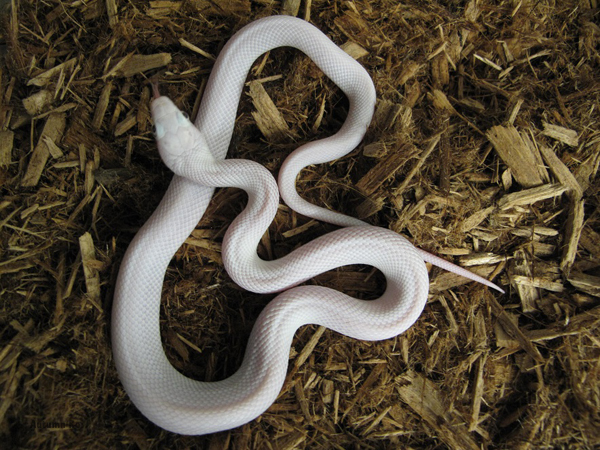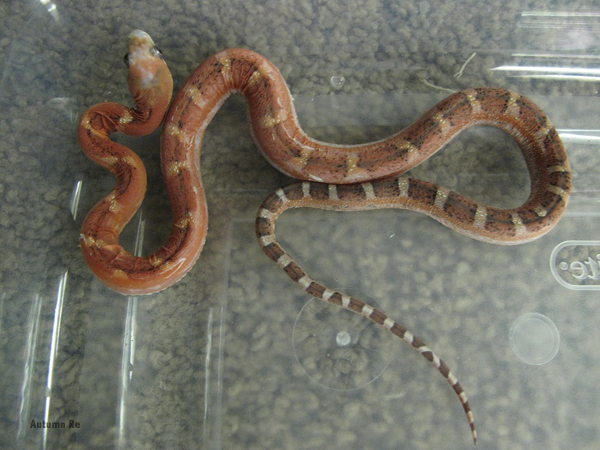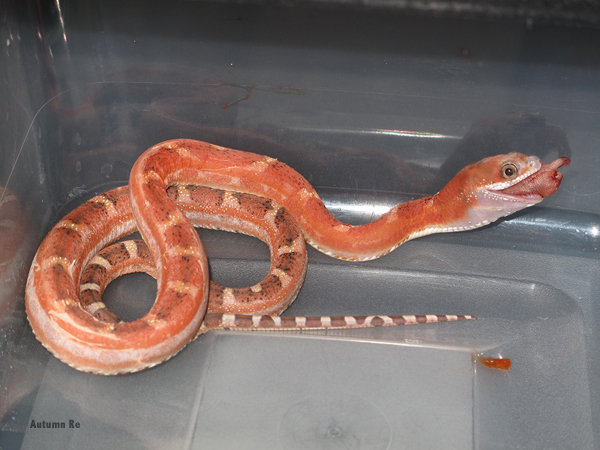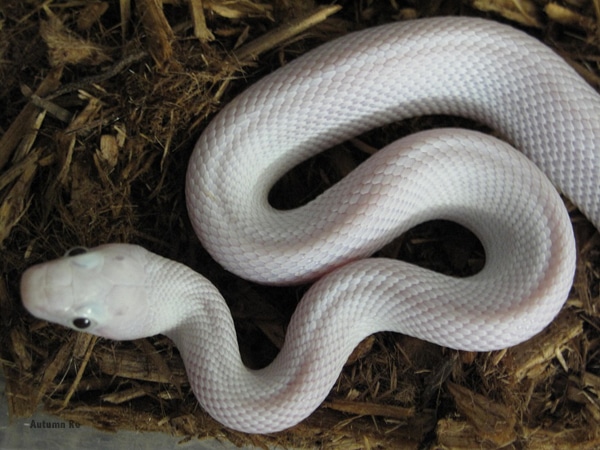Updated January 30, 2023 Texas Rat Snake (Elaphe obsoleta lindheimeri) Texas rat snakes are long, slender snakes found in a wide variety of habi
Updated January 30, 2023
Texas Rat Snake (Elaphe obsoleta lindheimeri)
Texas rat snakes are long, slender snakes found in a wide variety of habitats throughout Texas, Louisiana, and Oklahoma. They’re amazingly active and adaptable, capable of climbing and swimming with ease in search of prey. Their attitude and appetite for domestic birds often puts them at odds with their human neighbors, but they pose no actual threat and are actually quite beneficial at keeping pest populations down in farming areas. In captivity, they make inquisitive and lively display animals.
Read More
Breeding Trans-Pecos Rat Snakes
Black Rat Snake From Delaware Makes Trip To Montana And Back
Availability
Texas rat snakes are still very common within their native range and can often be legally collected (check your local laws) but a captive bred and born individual is less likely to carry parasites and more likely to be adjusted for life in captivity. With proper snake habitat products and attention to husbandry, these animals can thrive with a responsible keeper! Although they’re still not as commonly produced as their corn snake cousins, Texas rats are becoming more popular with the introduction of morphs such as albino, leucistic, and scaleless. They can often be purchased through online reptile shops and classifieds.
Texas Rat Snake Size
Texas rat snakes begin life out of the egg at just over a foot in length, then grow to be around five feet as adults. They will stay lean throughout their lives.
Texas Rat Snake Lifespan
The average Texas rat snake will reach between 10 and 15 years of age. Exceptional individuals may live more than 20 years.
Texas Rat Snake Housing and Substrate
These long and active snakes enjoy their space, but are also shy and benefit from lots of hiding places. They’re escape artists and can squeeze through very small cracks, so be sure that your enclosure is secure with cage clips and a screen top.

autumn re
Wood shavings such as aspen or cypress will provide a more natural look while also allowing for burrowing and spot-cleaning.
Fresh hatchlings may be kept in a five gallon reptile terrarium or a six quart tub for a couple months to get established,but will soon have to be upgraded to a larger living space. A 20 gallon terrarium or a 28 quart tub may suit a sub adult, but ultimately a 41 quart tub or an equivalent with at least three feet in length is needed. If using a glass terrarium, adults will be happiest with at least a 55 gallon.
Paper may be used to line the bottom of your cage. It’s very clean and cheap, but has to be completely replaced every time your snake makes a mess. Wood shavings such as aspen or cypress will provide a more natural snake substrate while also allowing for burrowing and spot-cleaning. Avoid oily, odorous woods such as cedar or pine as these can be detrimental to the health of the snake.
Texas Rat Snake Lighting and Temperatures
Specialized UVB or UVA lighting is not necessary for these animals, but a light cycle can help regulate their feeding and breeding response. A snake who receives outside light from a window will notice when the days grow shorter and may stop eating to prepare for the oncoming winter. This is helpful if you wish to breed your snakes, otherwise you may try to avoid this by hooking their lights up to a timer and setting it to provide at least 12 hours of light a day.
Being cold blooded, your snake can only regulate its body temperature by physically moving to colder or warmer areas, so it’s important that you provide your snake with a range to choose from. Such a gradient is easiest to achieve with longer enclosures and a single heat source on one side. Texas rat snakes prefer temperatures in the mid-80s on that side, then mid-70s for the cool side. You should use a lighting controller for reptiles to prevent overheating and to adjust the temperatures as needed.

autumn re
Texas rat snakes won’t require much humidity until they begin a shed cycle – signs of which are dull scales, cloudy eyes, and reclusive behavior.
Texas Rat Snake Water and Humidity
Fresh, clean water should be provided at all times. The water dish should be large enough for the snake to soak in and heavy enough so that the snake cannot knock it over.
They won’t require much humidity until they begin a shed cycle – signs of which are dull scales, cloudy eyes, and reclusive behavior. You should provide your snake with a high humidity shed box during this time and fill it with damp paper towels or moss to keep the inside moist.
Texas Rat Snake Feeding
Texas rat snakes burn a lot of energy foraging for food and therefore like to eat often. Every five days to a week is best, with adults capable of going longer in between meals than growing snakes. They will eat almost anything in the wild – lizards, birds, eggs etc. – but in captivity you can exclusively feed them rodents. Hatchlings are fed mice until they are large enough for rats. Ideal prey is as wide as or slightly larger than the widest part of your snake.

Autumn Re
Hatchlings are fed mice until they are large enough for rats. Ideal prey is as wide as or slightly larger than the widest part of your snake.
Clean, healthy feeders can be purchased at most pet stores and also online. Since live rodents may bite and injure your snake, I advocate feeding frozen prey. Be sure to completely thaw and warm up rodents before offering them to your snake. The pre-killed prey can then be wiggled around with tongs to trigger your snake in to striking.
Texas Rat Snake Handling and Temperament
Texas rat snakes can be defensive, especially when inside the cage, and will rattle their tails and gape their mouth open at what they perceive as a threat. They won’t hesitate to strike despite lacking venom or large teeth. Some will also musk when handled, especially young hatchlings which tend to be a bit more flighty.
Avoid handling your animal while it is in shed or immediately after it has eaten. An angry individual is best scooped up from behind rather than reached for from above whenever possible, and avoiding sudden pinching motions when holding it will help the snake feel as if its’ touching you rather than vice versa. If the snake is moving out of your hands, you can redirect it from the side without needing to grab it completely. Squeezing a nervous rat snake will make it lash out and can sometimes be dangerous as their vertebrae are fragile.
Buying captive bred does not guarantee a docile animal because they all have their own personalities, but most Texas rat snakes calm down with regular handling.
Snake breeder Autumn Re has always had a passion for reptiles, especially North American colubrids, and volunteers heavily in public education programs for their welfare.


